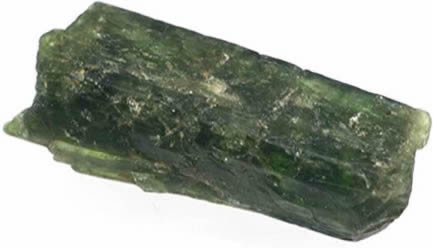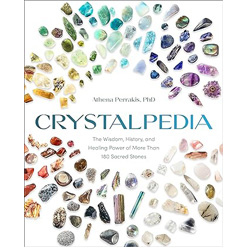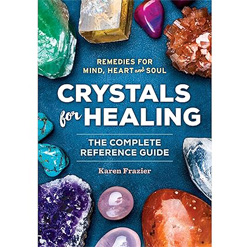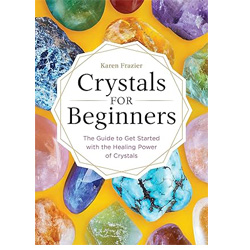- Jewelry
- Inspiration
- Our imagination
- Birthstones
- Celebrating with Eternal Flowers
- Druids and druidesses
- Flower meanings
- History, archeology jewelry
- History and healing properties of metals
- History and healing properties of stone
- Illumination jewelry
- Japanese symbols
- Maya calendar jewelry
- Stone color symbolism
- Stones catalogue
- Wedding anniversaries
- Searches a theme on the site
- Good Deals
- Paintings
- About
- Contact
JEWELRY
- Anklet
- Bracelets
- Brooches
- Cufflinks
- Earrings
- Pendants & Necklaces
- Rings
- Draw your jewelry
- How to clean your jewel
- Metal we used
INSPIRATION
- Our imagination
- Birthstones
- Celebrating with Eternal Flowers
- Druids and druidesses
- Flower meanings
- History, archeology jewelry
- History and healing properties of metals
- History and healing properties stones
- Illumination jewelry
- Japanese symbols
- Maya calendar jewelry
- Stone color symbolism
- Stones Catalogue
- Wedding anniversaries
- Searches a theme on the site

Diopside: history, healing properties and lithotherapy
Diopside properties

Diopside, a mineral from the pyroxene group, belongs to the calcium and magnesium silicates. It is particularly known for its prismatic crystals, which can reach impressive sizes, notably up to 50 cm³, a rare feat in the mineral world. This mineral forms under metamorphic conditions or in magmatic environments, often associated with ultramafic rocks, such as peridotites, or calcium-rich metamorphic rocks. It is also found in meteorites, adding to its unique appeal in the scientific field.
Its name derives from the Greek "Di," meaning "two," and "Opsis," meaning "vision," referring to the orientation of its crystals.
Diopside stands out with a wide range of colors: light green to black for the most common specimens, but also yellow, blue, gray, purple, white, and occasionally colorless. These colors reflect the chemical elements present in its structure, such as chromium for green varieties and iron for darker hues. The stone’s vitreous luster, coupled with its variable transparency, makes diopside an attractive gem, used both in jewelry and mineral collections.
The visual complexity of diopside and the diversity of its varieties have led to a multitude of names in the past. Some of these names are linked to specific localities or subtle chemical distinctions between specimens: Acantoide, Alalite (a name associated with a variety extracted from the Alal region in Italy), Coccolith, Dekalbite, Fassaite (though sometimes confused, this refers to another variety of pyroxene rich in aluminum), Kokkolith, Leucaugite, Maclurite, Malacolite, Mussite, Prothéite, Pyrgome, White Pyroxene, Granular Pyroxene, Greenish-gray Pyroxene, and Sahlite. These synonyms and regional names highlight the geological and historical significance of diopside across the world.
The hardness of diopside ranges from 5.5 to 6.5 on the Mohs scale, placing it in a moderate hardness category. Although not as fragile as some other stones, this level of hardness makes it sensitive to scratches and impacts, especially when exposed to daily wear or handled in less protected conditions. For this reason, it is recommended to use diopside in less exposed jewelry pieces, such as pendants or earrings, where it is less likely to experience frequent friction or impacts.
Varieties of diopside
- Baikalite: A dark variety often extracted near Lake Baikal in Siberia.
- Chrome Diopside (or Chromiferous Diopside): With its vibrant green color, this variety is the most widespread and sought after in jewelry. The chrome, responsible for its intense green hue, evokes the visual richness of emerald, making it a popular gemstone in jewelry.
- Tashmarin: A unique variety extracted in China, where the green color is softer due to a lower concentration of chrome.
- Lavrovite: A very rare apple-green variety, known for its exceptional brightness.
- Violane: Ranging from pale blue to violet, this variety is exclusive to Italy, particularly in the Val d'Ala region, giving it a special aura as a local stone.
- Black Star Diopside: Although often mistaken for Black Star Sapphire, this variety features inclusions that create an asterism effect, with a four- or six-rayed star visible under light.
- Fedorovite
- Schefferite
- Traversellite
Some varieties of diopside, notably the Black Star Diopside, are valued for their rare inclusions, which create fascinating visual effects. Asterism, primarily observed in black diopsides, is caused by rutile inclusions, which align light to form a star. This rare and sought-after phenomenon is reminiscent of star sapphire, but at a more affordable price, making it a popular alternative in jewelry. Interestingly, this variety is often mistakenly called Indian Black Star Sapphire.
Chrome diopside, in particular, is gaining popularity in the jewelry world due to its striking resemblance to emerald. As its extraction expands, this once semi-precious stone has gradually acquired the status of a precious gem, especially for its optical qualities and more accessible price point. Violane, with its distinctive violet hue, also attracts the attention of collectors and jewelers, despite its rarity in the market.
Stories, beliefs and legends about diopside
Diopside was officially described for the first time in 1800 by Brazilian geologist and naturalist José Bonifacio de Andrada e Silva, renowned for his numerous contributions to mineralogy. The discovery and description of diopside marked a turning point in mineralogical exploration, as this previously unknown stone began to attract the attention of collectors and scientists due to its complex crystalline structure and fascinating optical properties.
Although its discovery dates back over two centuries, chrome diopside, one of the most prized varieties, did not truly enter the jewelry market until later, especially after the opening of Russian borders following the end of the Cold War in 1989. Before that period, this stone was little used in jewelry outside geological and academic circles. With the collapse of the Soviet bloc and the fall of the Berlin Wall, Russia, which holds some of the most significant deposits, began to distribute this stone, positioning it as an affordable alternative to more expensive green stones like emerald, tsavorite, peridot, or green tourmaline.
One of the reasons for its growing popularity is the depth of its green color, which is especially vibrant in smaller sizes. However, larger specimens can become darker, losing some of their brilliance, which limits their use in jewelry to sizes under 2 carats. Gem cutters often employ specific cutting techniques to maximize the brilliance of diopside, playing on light dispersion and reflection angles.
The first significant deposits of chrome diopside were discovered in Siberia, in the Yakutia region, known for its extreme climatic conditions. These deposits are difficult to access, making diopside extraction costly and challenging. Extraction usually takes place during the summer months when the ground is not frozen. Other deposits have been found in Pakistan, notably in the Gilgit-Baltistan region, and more recently in Madagascar, where green diopside presents a slightly different hue, often softer.
Despite being relatively recent in the world of mineralogy, diopside has quickly inspired legends. However, many of these stories seem apocryphal, if not entirely invented for commercial purposes during the 1980s and 1990s when the stone gained popularity. It is conceivable that diopside may have been known and used in the past, perhaps under another name now forgotten. Additionally, no reliable sources confirm these legends, which are often repeated without specifying their cultural or geographical origin.
One of the most widespread beliefs is that green diopside is a stone of peace and tranquility, an idea stemming from its association with the color green, symbolizing regeneration and balance in many cultures. This belief is reinforced by the idea that diopside was used to promote peaceful dreams. Placing a piece of diopside on the forehead before sleeping was said to help connect with higher spiritual realms, bringing clear visions and deep inner serenity.
The legend of the tree of life links diopside to notions of rebirth and continuity. The idea that this stone should accompany the deceased in their tomb to ensure the cycle of life is a powerful metaphor resonating with ancient beliefs about nature’s regeneration and the perpetuity of the soul. This association may be explained by the natural formation of diopside deep within the Earth, giving the impression that it was a "fruit" of the underworld’s roots.
Mines: it is quite common in the Earth crust, Germany, Austria, Finland, India, Italy, Madagascar, South Africa, Sri Lanka, the USA, Russia, Myanmar.
Healing properties and benefits of diopside
A lo largo de la extensa historia de la humanidad, distintas culturas han atribuido al diopsido diversas propiedades, virtudes e interpretaciones de carácter curativo. Los elementos presentados aquí se inscriben en un enfoque cultural, histórico y descriptivo, cuyo objetivo es ilustrar la relación simbólica que se ha construido entre esta piedra y las sociedades humanas a lo largo de los siglos. Al igual que con los materiales mencionados anteriormente, esta información no constituye en ningún caso una recomendación terapéutica o médica ni refleja nuestras creencias, sino que da testimonio de tradiciones, observaciones y saberes antiguos.
- El diopsido se asocia tradicionalmente con la vitalidad de la sangre y, de manera más específica, con los glóbulos rojos. En algunos enfoques, se menciona como una piedra vinculada a la circulación y a una mejor oxigenación de los tejidos. Esta simbología ha llevado a relacionarlo con la resistencia física, el acompañamiento en estados de cansancio y el apoyo durante periodos de recuperación tras el esfuerzo o la convalecencia.
- Este mineral también es mencionado en ciertas tradiciones por su vínculo con el sistema inmunológico. A veces se le asocia con el equilibrio de los glóbulos blancos y con la capacidad natural del cuerpo para defenderse frente a agresiones externas. Esta dimensión simbólica lo ha convertido en una piedra evocada para acompañar a personas propensas a infecciones recurrentes o a disminuciones de la resistencia general.
- En relatos antiguos y en algunas prácticas contemporáneas, el diopsido se cita en relación con los trastornos de la coagulación. En este contexto, se percibe como un mineral que favorece un equilibrio sanguíneo más armonioso, especialmente en casos de sangrados abundantes o fragilidad capilar. Esta asociación ha llevado a mencionarlo como un acompañamiento simbólico de los procesos de cicatrización y de la limitación de la aparición de moretones, dentro de una lectura simbólica del cuerpo y de sus mecanismos naturales.
- El diopsido también es evocado por su vínculo con el crecimiento y el desarrollo, en particular en la infancia. Algunas tradiciones lo asocian con el fortalecimiento de los dientes y la salud bucodental, integrándolo en una simbología de solidez y estructuración. De este modo, esta piedra se menciona a veces para acompañar las etapas de crecimiento y formación del cuerpo.
- En lo que respecta a los órganos de eliminación, el diopsido se asocia tradicionalmente con los riñones. Se evoca como un apoyo simbólico de las funciones de filtración y eliminación, contribuyendo al equilibrio de los líquidos corporales. Esta dimensión ha llevado a que se mencione en contextos relacionados con la purificación y el mantenimiento de un funcionamiento renal armonioso.
- En algunos enfoques antiguos, el diopsido se vincula con el sistema endocrino y el equilibrio hormonal. Se asocia entonces con la regulación de los ciclos y el acompañamiento de periodos de transición, como la menopausia o los desequilibrios hormonales. Esta piedra se menciona a veces por su capacidad simbólica para favorecer el apaciguamiento emocional y una mayor estabilidad interior durante estas fases sensibles.
- El diopsido también se menciona en relación con la estructura ósea. Tradicionalmente se le asocia con la recalcificación y el fortalecimiento del esqueleto, lo que ha llevado a evocarlo como acompañamiento tras una fractura o en la prevención de la fragilización ósea vinculada al paso del tiempo. Esta simbología de solidez lo convierte en una piedra frecuentemente citada en contextos de apoyo corporal a largo plazo.
- Por último, en el plano muscular, el diopsido se asocia con frecuencia al alivio de calambres y espasmos. Se le evoca como una piedra que favorece la relajación muscular y una mejor circulación en los tejidos, contribuyendo así a mejorar la movilidad y a reducir las tensiones físicas. Esta dimensión se inscribe en una visión global en la que el diopsido acompaña la armonía entre el sistema nervioso, los músculos y el movimiento.
 Please note that all healing properties attributed to stones come from ancient traditions and various cultural sources. This information is provided for informational purposes only and does not constitute medical advice. In case of any health concerns, it is recommended to consult a qualified professional.
Please note that all healing properties attributed to stones come from ancient traditions and various cultural sources. This information is provided for informational purposes only and does not constitute medical advice. In case of any health concerns, it is recommended to consult a qualified professional.
Diopside jewelry samples
To learn more about litotherapy, we recommend you the following books:



